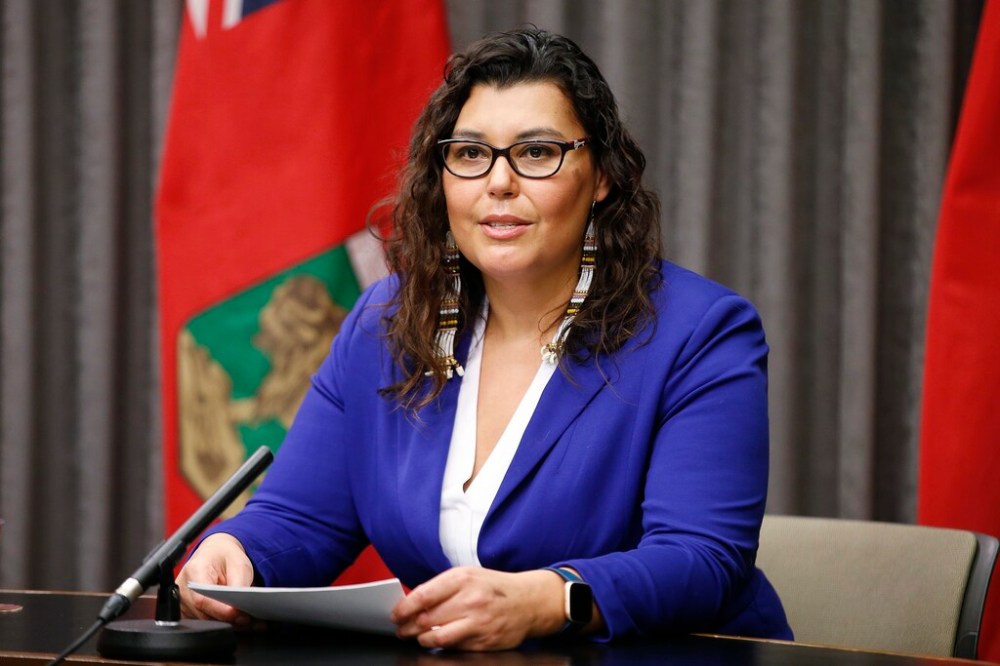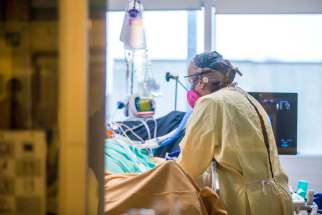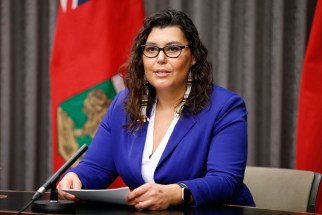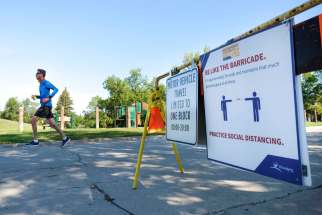First Nations-led success in community fight against COVID
Read this article for free:
or
Already have an account? Log in here »
To continue reading, please subscribe:
Monthly Digital Subscription
$0 for the first 4 weeks*
- Enjoy unlimited reading on winnipegfreepress.com
- Read the E-Edition, our digital replica newspaper
- Access News Break, our award-winning app
- Play interactive puzzles
*No charge for 4 weeks then price increases to the regular rate of $19.00 plus GST every four weeks. Offer available to new and qualified returning subscribers only. Cancel any time.
Monthly Digital Subscription
$4.75/week*
- Enjoy unlimited reading on winnipegfreepress.com
- Read the E-Edition, our digital replica newspaper
- Access News Break, our award-winning app
- Play interactive puzzles
*Billed as $19 plus GST every four weeks. Cancel any time.
To continue reading, please subscribe:
Add Free Press access to your Brandon Sun subscription for only an additional
$1 for the first 4 weeks*
*Your next subscription payment will increase by $1.00 and you will be charged $16.99 plus GST for four weeks. After four weeks, your payment will increase to $23.99 plus GST every four weeks.
Read unlimited articles for free today:
or
Already have an account? Log in here »
Hey there, time traveller!
This article was published 04/05/2021 (1684 days ago), so information in it may no longer be current.
On May 3, at precisely 10 a.m., on the government of Manitoba’s Twitter account, health officials announced all Indigenous people age 18 and over became eligible for a COVID-19 vaccination.
Confirmed shortly afterward by Dr. Marcia Anderson, First Nations Pandemic Response Co-ordination Team lead, this was much-needed good news — as the situation continues to get worse, restrictions get tougher, and more young people get sick.
First Nations have been hardly immune from this trend.

Last week, two First Nations people in their 20s died; on Monday, it was announced another, a woman in her 30s, had died of COVID-19.
The amount of variant of concern cases is also dramatically increasing, with Anderson reporting in late April a five-fold increase.
“First Nations people have made up 50 to 60 per cent of all COVID-19 admission to intensive care units,” she said at a news conference.
“We are also seeing consistently seeing higher numbers of off-reserve First Nations people than on-reserve people in hospitalizations and ICUs, and, unfortunately, more fatal outcomes.”
So, the news that all Indigenous adults 18-plus — First Nations, Métis and Inuit — can now get a shot is a big step. (As of April 30, only First Nations people 30-plus were eligible for a Pfizer or Moderna vaccination.)
Manitoba’s vaccine rollout, much maligned and, frankly, at times a complete debacle (ask any school teacher), has now reached a turning point — for First Nations anyways.
Inuit and Métis have generally been left to fend for themselves in the rollout. Adequate statistics are barely available on those communities.
First Nations statistics are readily available because they’ve been First Nations-led and supported by multiple levels of government. This makes the argument a targeted approach is needed — and works — convincing.
For instance, only three months ago, First Nations accounted for nearly 70 per cent of all COVID-19 cases in the province, despite being around 10 per cent of the population.
There were a few success stories (like Peguis First Nation locally eradicating the disease at Christmas) but the situation was dire amidst Manitoba’s second wave of the novel coronavirus pandemic.
As of Monday, First Nations consist of 20 per cent of all new cases and 35 per cent of all active cases.
Test positivity — once as high as 50 per cent on some First Nations — was 10 per cent on-reserve and 11 per cent off-reserve (remarkably close to the provincial 8.5 per cent rate).
This is because the data First Nations health leaders like Anderson collect makes it undeniable the disease impacts Indigenous peoples more, and must be addressed.
This has led to more than half of all on-reserve citizens and a quarter of all off-reserve citizens having at least one dose of the two-dose vaccines (making close to 40 per cent of all First Nations citizens in the province partly vaccinated). I’m willing to bet First Nations in this province (and indeed all Manitoba) will not see as bad a situation as in the winter.
The key is to stay the course and keep the vaccination rollout First Nations-led and not expect Canadian solutions to be First Nations solutions.
Let me explain.
For instance, I got my shot in mid-April at the downtown Winnipeg RBC Convention Centre super site, a 90-minute process more notable because I was 20 years younger than nearly every client in the room.
I counted three First Nations peoples in the 300 or so in my time slot.
It’s well-known — and well-reasoned — that due to racism, historical mistrust, and poverty, Indigenous people may not want, or be able, to access Canada’s health-care system. Simply put, the idea of being told by non-Indigenous people we need to go somewhere and take some medicine is understandably met with suspicion.
Aware of this, leaders such as Anderson and the First Nations response team have done what we do during feasts: bring the food to the people.
Opening vaccination clinics in First Nations communities and in downtown, Indigenous-run organizations like Ka Ni Kanichihk and on Higgins Avenue have been instrumental.
What also helps are Indigenous doctors such as Anderson and Dr. Barry Lavallee, alongside Indigenous leaders such as Gerry Shingoose, Kevin Chief, and my father Murray Sinclair, getting their personal vaccine shots publicized on social and traditional media.
It’s another step in what has been a huge learning curve in the fight against COVID-19, demonstrating First Nations are the most effective in leading the fight in our communities.
I could say that about the Métis and Inuit, too, but there’s been no data, care from governments, or interest until Monday morning.
niigaan.sinclair@freepress.mb.ca

Niigaan Sinclair is Anishinaabe and is a columnist at the Winnipeg Free Press.
Our newsroom depends on a growing audience of readers to power our journalism. If you are not a paid reader, please consider becoming a subscriber.
Our newsroom depends on its audience of readers to power our journalism. Thank you for your support.






